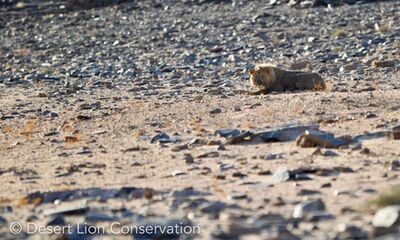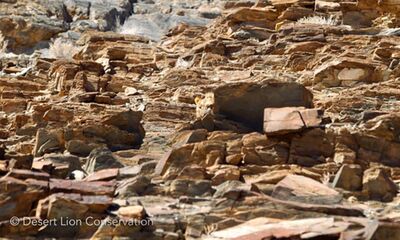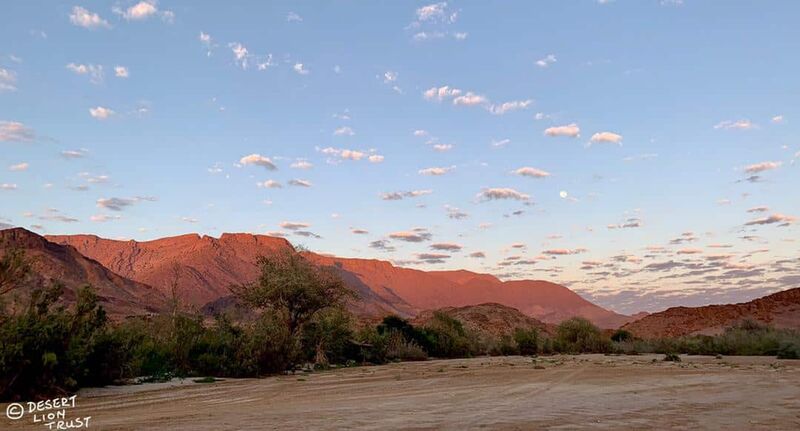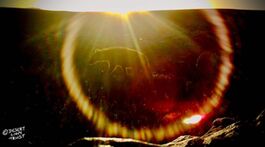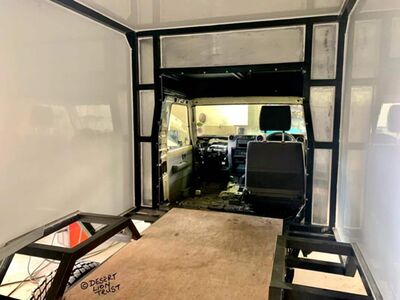Times of Hardship
Saturday 1 May 2021
The desert-adapted lion population of Northwest Namibia is facing starvation and increased levels of human-lion conflict. Due to below average rainfall for several consecutive years and aggravated by recent adverse weather conditions, such as extreme heat combined with sand and dust storms, the Northern Namib has experienced hyper-arid conditions. These ongoing conditions have severely impacted the local communities, livestock farmers and wildlife populations. An influx of humidity and precipitation over the Northwest of Namibia during March and April 2021 looked promising, but the actual amount and extent of rainfall reaching the barren landscapes of the Northern Namib is still unclear. The scattered and erratic rainfall patterns have nonetheless resulted in the dispersal of wildlife populations, leaving most lion prides with extremely low numbers of prey animals within their respective home ranges. The situation is unfortunately not likely to improve for the next two months. Proactive management of livestock along the transition zone between the wildlife and farming areas, quick reaction and mitigation of incidents of human-lion conflict, and monitoring of the lion population are essential activities for the following months.
Huab and Ugab
Lions that occupy the Huab and Ugab ephemeral river systems were particularly hard hit by the lack prey animals in the home ranges. Incidents of human-lion conflict were recorded in the De Riet area towards the end of 2020 and although the lion-proof protective enclosure and Early-warning system prevented extensive livestock losses, the problems persisted. Under the guidance of the Ministry of Environment, Forestry and Tourism, two lions were euthanised after they became a threat to public safety. On 26 April 2021 a young lioness (Xpl-133) in poor physical condition and threatening the safety of local residents was captured and relocated to a captive facility / protected area in central Namibia. The remaining four lions of the Huab pride are being monitored and hopes are that they will survive the difficult months that lie ahead.
The young lioness Xpl-133 relocated to a safe facility in central Namibia
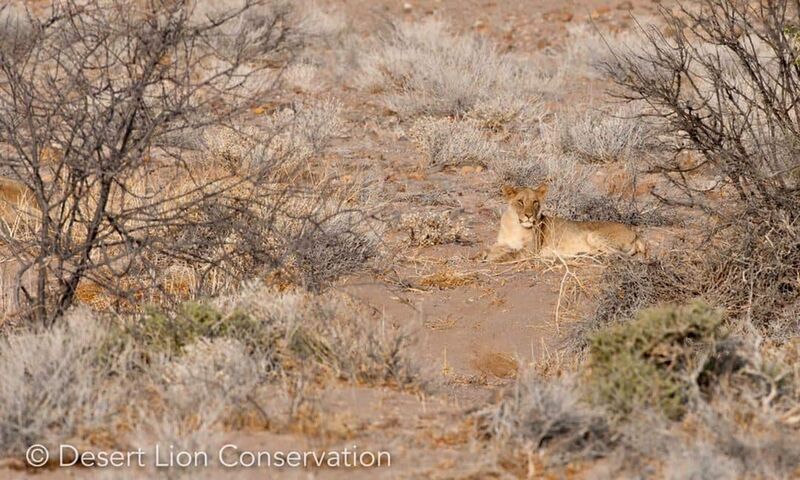
Monitoring the status and condition of the remaining four lion of the Huab pride
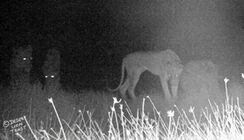
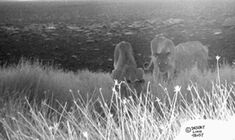
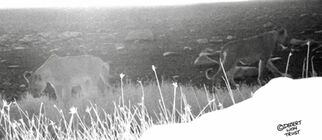
In the Ugab river an adult male (Xpl-115), also in poor physical condition, moved into the SRT camp at Brandberg West on 20 April 2021 and harassed the camp manager. A few days later the male attacked two groups of tourists. Fortunately nobody was badly injured during these incidents. On 28 April 2021 the lion entered the stables at White Lady Lodge and killed a mule. The Ministry of Environment , Forestry and Tourism was quick to react and the male was immobilised and relocated to a captive facility / protected area in central Namibia. The cause of the problem that developed with Xpl-115 in the Ugab river is unfortunately more complex than just the lack food. During the past few years there has been continued evidence suggesting that tourists and operators in the Ugab area have been feeding the resident lions, presumably to increase photo and viewing opportunities. It is therefore likely that the habituation and imprinting that would have occurred by feeding, has manifested itself acutely in the behaviour of the starving lion.
Images of the Ugab male Xpl-115 during the past 12 months
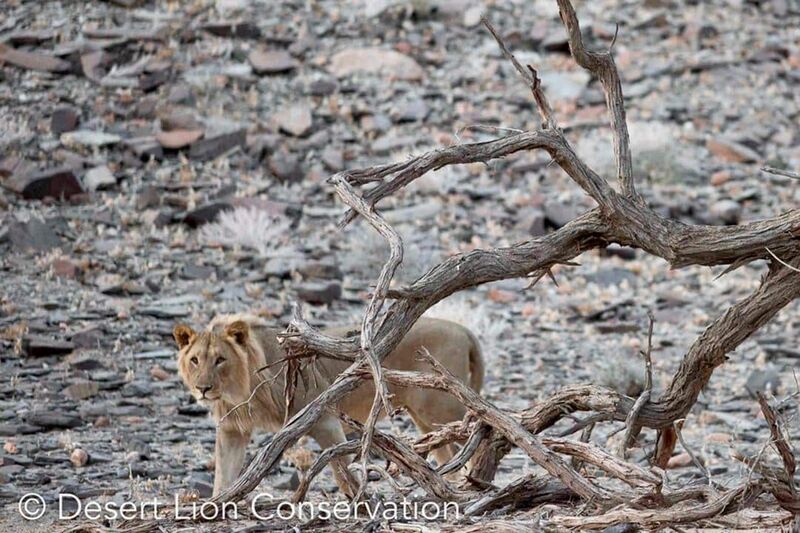
Brandberg massive and the Ugab river
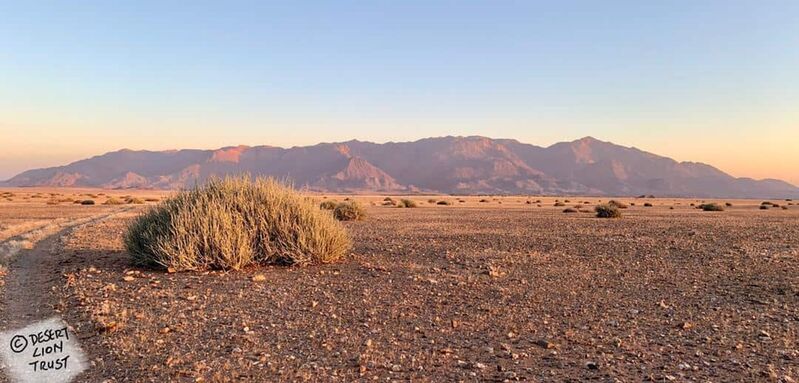
Monitoring
A systematic survey of the status and condition of the all marked and known lions in the study area is underway as part of an annual routine. The two Orphan lionesses have left to Hoaruseb river and returned to the Hoanib Floodplain. The Hoanib pride have been favouring the mountains to the north and south of the main drainage line where they have been successful in killing giraffes.
Young lioness Xpl-114 “Charly” hunting along the Hoanib river
The Hoanib pride favouring the mountainous habitat in search of prey
Gai-Ais
A camera-trap at Gai-Ais spring between the Ugab and Huab rivers has produced interesting results. During the past six months the camera recorded few images of ungulates, but it recorded regular visits by vultures as well as the members of a resident clan of spotted hyaenas.
An ostrich and tagged Lappet-faced vultures at Gai-Ais spring
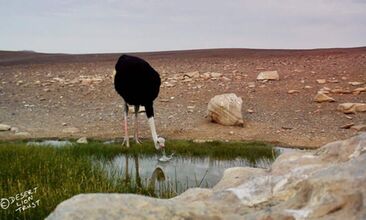
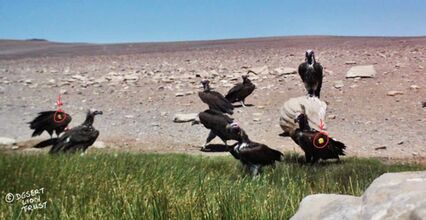
Spotted hyaenas at Gai-Ais spring
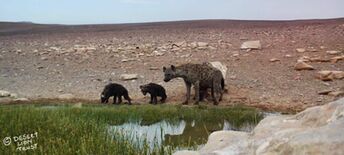
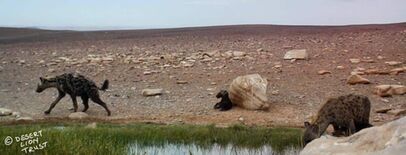
New research vehicle
Modification of the new Land Cruiser research vehicle sponsored by the Lion Recovery Fund, the Lionscape Coalition, Ultimate Safaris & several other donors is well under way in Swakopmund. The vehicle is expected to be ready for fieldwork towards the end of May 2021.

